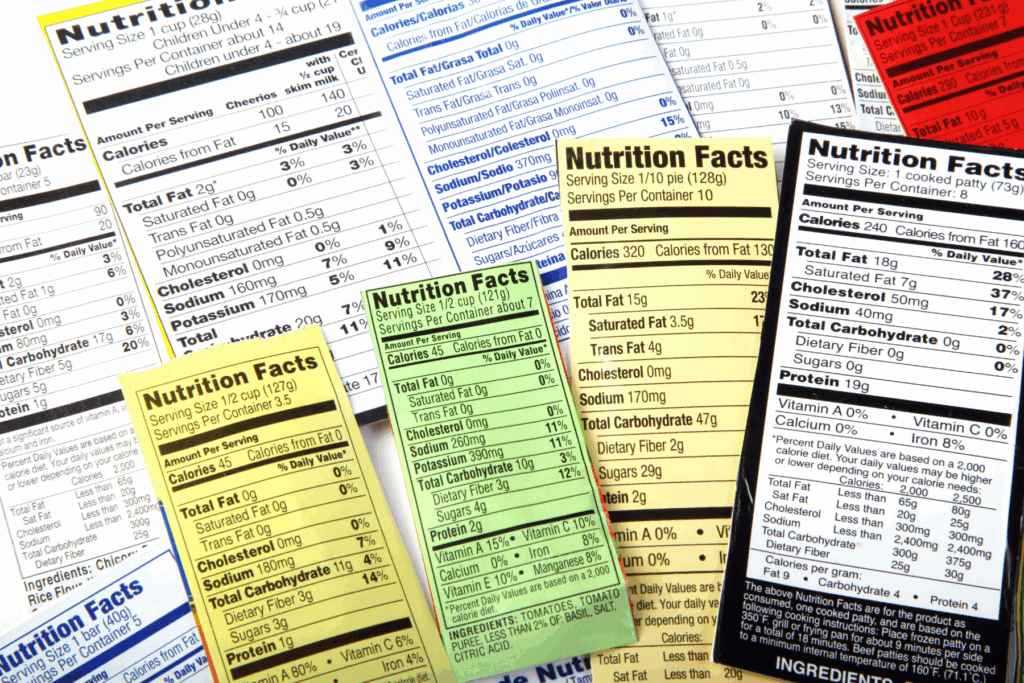


How To Read a Food Label for Your Little One
Reading Food Labels for Babies and Toddlers
When introducing solids, it’s easy to feel overwhelmed by the number of packaged products marketed for babies and toddlers. Yogurt melts, teething biscuits, baby puffs, toddler cereals—the options are endless, and the packaging often appears trustworthy.
Learning how to read nutrition facts or food labels is one of the most useful skills you can develop as a parent or caregiver. It helps you quickly identify whether a food supports your child’s nutritional needs—and just as importantly, when it may be worth leaving on the shelf.
This blog will guide you through what to look for (and what to avoid) when choosing packaged foods for babies and toddlers so you can make informed decisions with confidence!
A Quick Note on Babies Under 12 Months
During the first year, breast milk or infant formula remains the primary source of nutrition. Solids are introduced around 6 months as complementary foods, helping meet nutrient needs, offering allergen exposure, and supporting sensory and oral-motor development.
Packaged foods can play a role in a varied diet, but they should complement a foundation of iron-rich, nutritious whole foods and age-appropriate textures.
What to Look For on a Nutrition Facts Food Label
Added Sugar: Aim for 0 Grams
Current guidelines recommend avoiding added sugars entirely for children under 24 months. Added sugar contributes no nutritional value and can increase the risk of chronic diseases later in life (1).
Where to check:
On the Nutrition Facts label, scroll to “Added Sugars.” This should read 0g.
Common sources:
Flavored yogurts, pasta sauces, baby snacks, pouches, and even cereals.
Food Label Tip: Many common “baby” foods like flavored yogurt, pouches, and teething biscuits contain added sugars. Always check the label! Check out our blog on added sugars and artificial sweeteners here for more information!
Sodium: Keep It Low
Babies have maturing kidneys and don’t need much sodium. Many packaged foods contain more than expected, so it’s worth checking the amount per serving.
General guidance:
- Under 12 months: less than 50 mg per serving
- 12–24 months: ideally under 100-200mg per serving
Food Label Tip: Certain packaged snacks like crackers, “mini meals”, and sauces can be higher in sodium than you might expect. Be aware and look for alternatives when choosing these foods!
See our Sodium Blog here →
Iron: A Key Nutrient from 6 Months Onward
By 6 months of age, baby’s iron stores begin to decrease, and dietary iron becomes essential. Iron needs at this stage are high, about 11 mg per day.
Food Label tip:
Look for packaged foods with 10% or more of the Daily Value (DV) for iron per serving.
Helpful sources include:
- Iron-fortified cereals
- Pureed meats, lentils, beans, tofu, and eggs
- Fortified iron snacks – puffs, bars, and pouches
Tip: Pair iron-rich foods with vitamin C sources (such as strawberries or bell peppers) to enhance absorption! Explore our Iron Blog here →
Calcium: Emphasis After Age 1
Before 12 months, breast milk or infant formula typically provides sufficient calcium. After the first year, particularly when transitioning off of formula, calcium from solid foods becomes more important, and nutrient needs increase to 700 mg per day.
What to look for:
For toddlers, aim for foods with 10–20% DV of calcium per serving.
Solid food sources might include:
- Full-fat yogurt or cheese
- Fortified plant-based milks (if using)
- Whole milk
- Tofu or leafy greens (chopped and cooked appropriately)
Read our calcium blog for more information here →
Healthy Fats: Essential for Growth and Development
Fat is critical in the early years for brain development, cell structure, and hormone production.
Avoid low-fat options unless specifically advised by your healthcare provider. Babies need more fat than adults, and fat-containing foods should be offered regularly!
Encouraged sources include:
- Avocado
- Olive oil
- Nut and seed butters (thinned if under 12 months)
- Fatty fish like salmon
Check out our blog post on healthy fats here →
Protein: Needs Are Usually Met
Most infants and toddlers meet their protein needs through a mix of breast milk, formula, and complementary foods. There’s typically no need to emphasize “high-protein” snacks. This blog has more information on protein and your little one!
Food Label tip:
If a product markets itself as “protein-packed”, consider whether it’s necessary. In most cases, iron, fat, and texture variety are more important focuses during this stage!
Smart Shopping Tips
- Choose items with no added sugar and low sodium, even if labeled “baby” or “toddler”.
- Buy plain, unsweetened yogurt, applesauce, and cereals, you can add your own fruit to naturally sweeten these products.
- Be cautious of “health” terms like “organic” or “all natural”. Always read the label. Read our organic blog here for more information on whether or not organic foods are worth it!
- Stock your freezer with batch-prepped vegetables, legumes, or cooked ground meat for quick meals!
- Don’t feel pressured to only buy baby-specific brands. Many adult whole foods are completely appropriate with the right preparation, and we love to encourage family meals!
Final Thoughts
You don’t need to be a nutrition expert to make strong choices for your child, just a few simple tools and a little practice reading food labels. Prioritize iron, healthy fats, and a range of textures. Aim for low sodium, no added sugars, and simple ingredients where possible!
Check out our grocery store guide for more tips and brand recommendations when shopping for your little one!
If you’re just getting started, know that each meal is an opportunity to support your child’s development- not just through nutrients, but through experiences with taste, smell, and texture. The goal isn’t perfection, but progress and variety over time.
Want more? My course is a 100% evidence-based approach to starting solids in a way that encourages a healthy dietary pattern from the start.
Check out the Starting Solids 101 Course now!
Access Course Now

Cinthia Scott is a Registered Dietitian (RD) and International Board Certified Lactation Consultant (IBCLC) with over 10 years experience in the field of dietetics. Cinthia focuses on ensuring optimal nutrition in the first 1000 days of life to ensure optimal growth and development as well as set the stage for long-term health. Cindy is an author, starting solids expert, and advocate for caregivers receiving evidence based education and support surrounding breastfeeding and starting solids.
Cinthia is co-author of the 101beforeone Starting Solids Book, “101beforeone -baby-led feeding cookbook,” and is the founder and owner of The Baby Dietitian LLC which is her private practice built to provide virtual 1:1 services for caregivers surrounding infant nutrition, toddler nutrition, and breastfeeding support. Cinthia is also the creator of the Starting Solids 101 Program which provides caregivers 1:1 support from a Pediatric Dietitian on how to provide optimal nutrition from the start and create healthy eating habits that will last their whole lifetime. To work with Cinthia, you can access her services here.
Cinthia provides tons of free information for parents on her social media accounts as well.
- Instagram: @The.Baby.Dietitian
- Tiktok: @The.Baby.Dietitian
